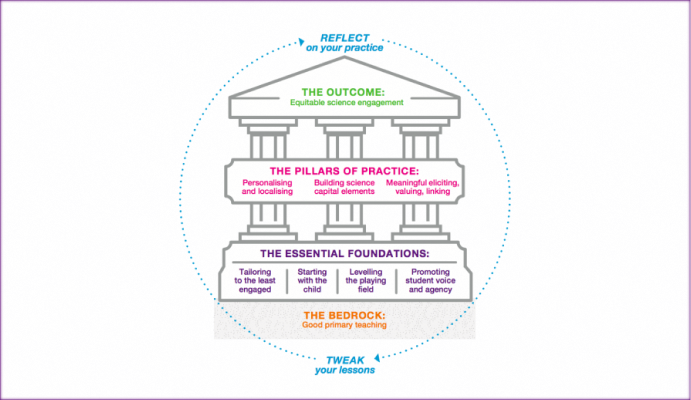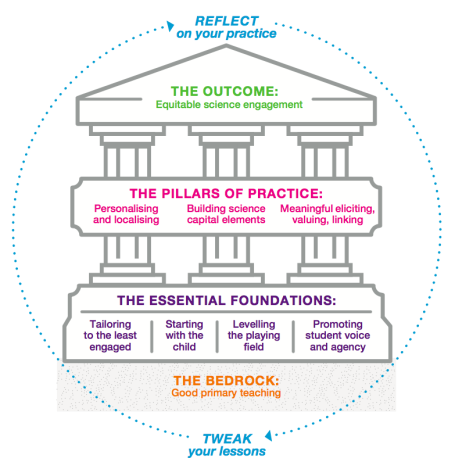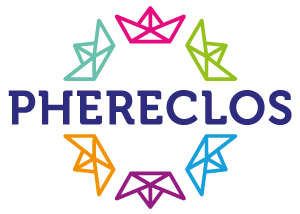
Social Justice and Inequalities in STEM Education: How can we support more inclusive and engaging STEM education?
Back at the end of June we were joined by Prof. Louise Archer, Karl Mannheim Professor of Sociology of Education at University College London. ‘the science capital queen’ gave us an insightful look at some of her research including the long-running ASPIRES research project which has explored young peoples views of science from aged 10 until 21 years old (40,000 interviews, and counting!). This study has demonstrated a lack of interest in science is not the main issue to be tackled, and that there is no single factor, so no magic bullet!
The full (2019) report can be viewed here
Louise explained how the ideas of Science Capital have their origins in Pierre Bourdieu’s sociological ideas from the 1970s of habitus, capital and field going on to focus on the need to change the ‘field’ and not the young person. Field determines WHAT and WHO gets valued. She pointed out how too often people have made the assumption that something is lacking in young people (so called ‘deficit models’) and that is not a helpful attitude/approach. Our session had its focus on social justice and inequalities in STEAM and Louise’s research takes account of many of these factors in trying to unpick the factors behind more equitable / socially-just STEM engagement practice and to help young people and STEM make more meaningful connections.
Louise and her team have developed 2 key tools to help tackle these issues, the Equity Compass and the Science Capital Teaching Approach. Used together they are helping practitioners re-examine their practice and experiment with seemingly small changes that can have significant impacts in terms of engaging audiences in STEM activities (making everyone feel like science could be for them).
The equity compass looks at 4 key points: challenging the status quo (in terms of power-relations, resources and priorities), working with and valuing diverse learners (particularly from minoritized communities), embedding equity and extending equity. It is a chance to map and reflect on your practice, striving to move your score on the compass outwards away from the centre, take a look at this short video for a closer look at the Equity Compass.
The Equity Compass is designed to be used in conjunction with the Science Capital Teaching Approach (SCTA), initially co-created for secondary schools, a modified version for primary schools and informal education settings has just been released. The SCTA builds on existing good teaching practice to enable users to ‘change the field’ (above). The foundations of this approach are designed to broaden what and who counts. Young people do not just find science concepts difficult – some struggle to identify and engage with science, it feels alien to them. There is a need to challenge stereotypes and dominant ideas and representations of science, such as ‘who does science’ and what constitutes ‘doing’ science.
If you wish to look more deeply at some of the ideas Louise shared follow the links below and feel free to share your experiences with the OStogether community

